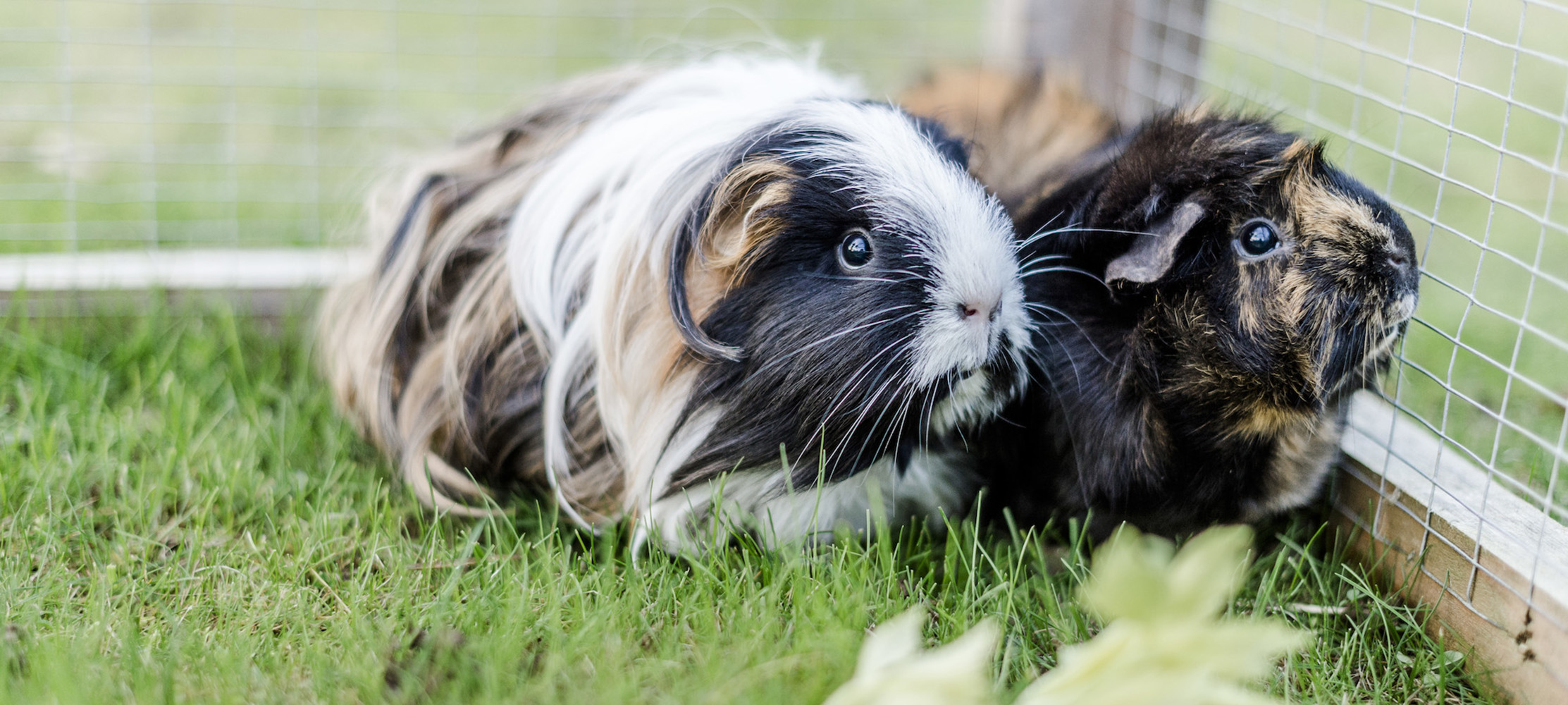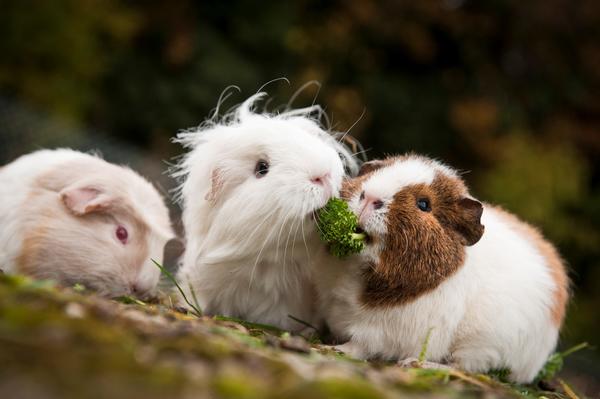
How to keep guinea pigs cool in the summer
Keeping your guinea pigs cool during the summer months will help to avoid heatstroke.
Guinea pigs can overheat very quickly, as they are unable to regulate their body temperature by sweating. Here's our tips for keeping your guinea pigs cool in the heat.
1. Find the shade
Hutches can heat up quickly in warm weather. If your guinea pigs live outside, move their hutch and run into the shade and out of the sun. If you cannot find a shaded spot in your garden, you can use a sun parasol – just remember that you may need to move it throughout the day as the direction of the sun changes.
Cooling hutch covers can also be purchased for your guinea pigs' run or hutch. But be careful to not fully cover your guinea pigs' home, as this will prevent air flow.
2. Bring your guinea pigs indoors
When the weather is very hot, it's a good idea to bring your outdoor guinea pigs inside, away from the heat.
Sheds, conservatories and garages can also become extremely hot in the heat, so it's important to move your guinea pigs into a cool room. You can keep a room cool by closing curtains and blinds to block out the sun.
Important
Temperatures above 26 degrees Celsius can cause fatal heatstroke, so it's best to bring your guinea pigs inside before it becomes too hot.
3. Use a fan
If your guinea pigs are indoors, a fan can be used to keep the air cool and create airflow. Do not blow the fan directly onto your guinea pigs, and make sure they have enough room to move away if they wish.
You can also place a cool, damp towel over part of your guinea pigs' run. When you place a fan in the same direction, it will create a cool breeze. When using a fan, remember to keep wires safely tucked away to avoid your guinea pigs nibbling them.
Note
If your guinea pigs are lying stretched out with their back feet behind them, it can be a sign that they are feeling warm and need some help to cool down.
4. Try frozen water bottles
Using frozen water bottles or ice packs is a great and affordable way to keep your guinea pigs cool. Wrap any frozen items securely in an old, clean towel, or even a sock, to avoid ice burns. If your guinea pigs feel hot, they can lie next to the bottle to keep cool.
5. Keep your guinea pigs hydrated
Make sure that your guinea pigs have access to plenty of fresh, cool water throughout the day. Placing water bottles or bowls in different areas of your guinea pigs' home can encourage them to drink. Check the bottles regularly to make sure that the water spout is not blocked.
Hydrating vegetables such as cucumber can also be fed in moderation to keep your guinea pigs hydrated, but feeding too much can cause an upset tummy. Watermelon is also hydrating, but it is high in sugar so should only be fed as a treat.
Tip
When it's time for dinner, consider soaking your guinea pigs' leafy greens in cold water, or serve them fresh from the fridge.
6. Use cool tiles
Marble tiles or slates can help keep your guinea pigs cool, as they can lie on top of them if they wish. You also place tiles in the fridge to keep them extra cool before putting them in your guinea pigs' home.
Make sure that any tiles remain in the shade, as they can become extremely hot if placed in direct sunlight.
7. Avoid plastic hidey houses
Hidey houses or shelters that are made of plastic can quickly heat up inside, so it's best to avoid using them when the weather gets warm. Swap them for a man-made burrow made of big piles of hay. This will give your guinea pigs somewhere to burrow down into, out of the sun.
8. Keep on top of grooming
Long-haired guinea pigs are especially vulnerable to the heat. Keeping on top of grooming and regularly brushing out any excess hair, will help them to feel more comfortable. They may also need their hair trimming by a vet or professional groomer.
9. Dampen their fur
Dampening your guinea pig's fur with a tepid, damp cloth can help to cool your guinea pig down. If they are comfortable with it, you can also use a fine water mist to carefully spray their fur – just remember to do so at a distance, and stop if they're unsure.
10. Take care to avoid fly strike
Guinea pigs are at risk of fly strike (myiasis) during the summer months. Fly strike is caused by flies laying eggs on your guinea pig's fur. Once the eggs hatch, the maggots eat away at your guinea pig's flesh, which is extremely painful and often life-threatening.
Preventing fly strike
Prevention is better than cure, so it's best to take steps to keep your guinea pigs safe:
- Keep your guinea pigs' home clean – flies are particularly attracted to dirty areas and can quickly lay eggs on soiled bedding. This can lead to the resulting maggots burrowing into your guinea pig's fur. Remember to remove any soiled bedding daily.
- Groom your guinea pigs – a dirty bottom can attract flies, so it's important to keep the area around your guinea pig's bottom clean and tangle free
- Check your guinea pigs' bottoms daily for signs of fly strike
If you notice maggots on your guinea pig, contact your vet immediately.
Note
Older guinea pigs or guinea pigs suffering with arthritis or dental problems are more at risk fly strike, as they are less able to keep themselves clean.
Heatstroke in guinea pigs
Heatstroke occurs when your guinea pig's body temperature becomes too high. Heatstroke can quickly become fatal, so if you notice any signs, act fast and contact your vet immediately.
Symptoms include:
- weakness and lethargy (tiredness)
- heavy or rapid breathing
- restlessness
- drooling
- confusion
- convulsions
If you suspect that one of your guinea pigs is suffering from heatstroke, dampen their fur with cool, but not freezing, water. This will help to slowly bring their body temperature down while you take them to the vet.
Important
Never place your guinea pig directly into cold water as the shock can be fatal.
Page details
Reviewed
• 23 October 2023
Next review
• 22 October 2026







